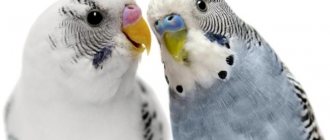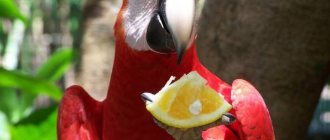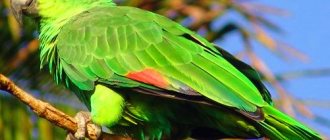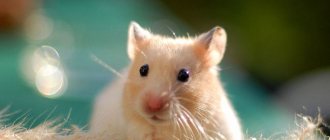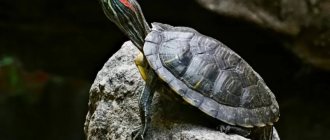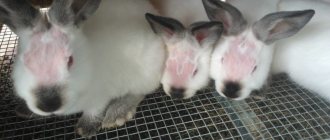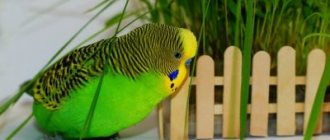Many novice owners of budgerigars, when they first encounter molting in their pets, are perplexed about this process and the appearance of the birds. Some of them begin to believe that feather loss is associated with pathological processes, trying to show the bird to a veterinarian as quickly as possible.
However, in the vast majority of cases, molting in budgies is a physiological process that is in no way related to the pet’s illness. It can cause a lot of inconvenience to both the bird itself and the owner, so every owner of a bird needs to know about the intricacies of caring for a parrot during this period.
Why do birds molt?
Molting should be understood as the natural process of renewing the plumage of a bird. All types of parrots are susceptible to it, including budgies.
The molting mechanism itself is quite simple. Each feather of a parrot is supplied with oxygen through the vascular network. Molting is preceded by the cessation of blood supply to the base of the feather shaft, as a result of which it falls off.
This process is somewhat similar to the falling of leaves on trees. However, in birds, a new feather grows in place of the old feather.
This is necessary due to the fact that bird feathers wear out over time, and the normal condition of the plumage is necessary, first of all, so that the bird can fly. Thus, molting is a completely natural process, which is determined by biological factors.
However, in addition to this, there are other reasons for the loss of plumage that are associated with pathology. So, a bird can molt due to insufficient nutrition, parasitic diseases and idiopathic conditions. These factors will be discussed in more detail below. The process of losing feathers due to one pathology or another is not molting in the sense that ornithologists understand it.
Has your parrot been sick?
Not really
...And also vitamins?
Experts believe that during juvenile molting, vitamin supplements are indicated only when it is accompanied by complications and one can determine by the appearance of the bird that it is unwell.
In general, they can be given only when the winged pet reaches one year of age, regardless of whether the parrot changes its plumage or not.
Since the reasons for the need to take vitamin complexes may be different, the drugs should be offered according to the attached instructions.
A little off topic, but there is also a recommendation: add sulfur to mineral mixtures, because it is very important for the health of feathers and beak. The recommended proportion is two teaspoons of the mixture and sulfur literally on the tip of a knife.
When does wavy molt occur?
Shedding is not a one-time process. It occurs in parrots with a certain frequency. The number of molts is primarily influenced by the conditions in which the bird is kept. However, it usually occurs twice a year.
In wild parrots living in their natural environment, molting occurs once a year.
Accordingly, at least once a year the pet’s plumage is completely renewed. If this does not happen, then it makes sense to show the bird to a veterinarian. However, it should be remembered that molting does not always occur with the same frequency. The time of its onset is influenced by many factors, both related to the conditions of detention and to the individual characteristics of specific individuals.
In general, if a parrot does not shed for more than a year, but its health does not cause concern to the owner, that is, it still remains active and cheerful, then most likely the pet does not have any health problems.
Knemidocoptic mange (scabies)
Sometimes, the cause of feather loss can be a parasitic infestation of the scabies mite, which causes a skin disease - scabies. This disease poses a threat to many bird species.
During infection with scabies, loss of feathers occurs mostly on the paws and folds of the skin, and occasionally in other places. The hairless parts of the bird's body will look lumpy and reddened. The parrot constantly scratches these bald patches and plucks feathers with its beak.
Diagnosis and treatment should only be carried out by a veterinarian or ornithologist. The tick does not pose a danger to humans, and if it gets on the skin it dies within a few days.
How often do birds molt?
So, normally, budgies molt once or twice a year. Moreover, this process has a certain periodicity.
As a rule, molting of plumage in domestic parrots occurs after winter. Birds shed the dense plumage that has formed over the winter. The second moult occurs in the fall. However, not all individuals change feathers twice a year.
Separate mention should be made of this process in sexually mature females. Thus, laying eggs and caring for chicks takes a lot of energy from birds. Therefore, after hatching the chicks, molting can be observed in females for 1-2 months.
Pathological feather loss
Loss of feathers may be a symptom of disease. If your pet sheds throughout the year, then you need to seek help.
French molt
A peculiarity of the pathology is that parrots lose feathers, but do not grow new ones. As a result, the bird remains completely naked and dies.
Causes discomfort:
- genetic predisposition;
- mating of close relatives;
- lack of protein;
- congenital depletion.
The French molt attacks females who often lay eggs. The break between clutches should be at least 2 months. During the rest period, breeders remove the nesting house from the cage so as not to spur the parrots' reproductive instinct.
Scabies
The disease caused by intradermal mites is called knemidocoptic mange. Pathogens are transmitted within a bird family by using a common feeder or accessories. Poor quality food can also become a source of infection. Branded manufacturers process grain using special technologies to destroy the disease.
Important! Mammals are not infected with knemidocoptic mange.
Ticks are not scary for healthy pets, but a weakened body cannot expect anything good from them. The best prevention of the disease:
- good nutrition;
- maintaining hygiene;
- quiet life.
Treatment for knemidocoptosis is prescribed by a veterinarian, recovery occurs after 1-3 weeks. After making a diagnosis, it is important to treat the cage with boiling water and throw away the accessories, because mites get into the cracks.
First molt
Parrot chicks hatch almost naked, and their body may be covered with a small fluff. The bird does not need real feathers at this stage of life, since the babies are completely dependent on the mother.
However, 2-3 weeks after hatching, the chick begins to be covered with its first feathers. At the same time, the structure of the pen is quite weak and fragile. The coloring of chicks, as a rule, has more distinct structures compared to the plumage of their older relatives.
The first molt begins in the chick 3-4 months after hatching from the egg. Ornithologists call it juvenile. This name was given to it due to the fact that processes associated with puberty begin in the bird’s body. As a rule, the first molt is tolerated quite easily by the bird.
The newly grown feathers are more rigid and denser in structure. The color of the bird also changes somewhat. It becomes blurred, and the clear boundary between different plumage colors inherent in young parrots is erased.
Ideally, the first change of feathers occurs at 4 months. If after 5 months the chick has never moulted, then this may indicate a hidden pathology, and therefore it must be shown to a veterinarian.
Simultaneously with the end of the first molt, the period of puberty of the bird ends. It is from this period that the parrot is considered adult and capable of producing offspring.
First time
Already at four months, the chick begins to experience its first molt: in budgerigars it lasts intermittently and ends closer to a year. At this time, down falls out, and dense feathers designed for flight grow. A young parrot acquires its true coloring; it will not change throughout its life. At the end of the baby molt process, also called juvenile, the bird is considered mature. It is already possible to visually determine gender.
This is interesting! By analogy with humans, molting is similar to changing teeth. When permanent teeth grow in, the next stage of growing up begins.
If the budgerigar chick is already five months old and the juvenile moult has not yet begun, this may be a consequence of internal problems. Perhaps there is a deficiency or excess of some substances in the body. Environmental conditions are not always suitable for starting a natural cycle. To avoid guessing, consult your veterinarian.
Symptoms
Signs of plumage change are quite specific.
So, it is important to note that it happens smoothly, gradually. That is, the bird does not lose all its plumage at once. In this case, the symmetry of feather loss is noted.
For example, on the wings they fall out in pairs. This mechanism ensures the normal functioning of the pet, in which it is able to fly.
On the resulting bald spots you can see small whitish bumps. These are the foundations for future feathers. It is from these that the plumage will be formed.
During the molting period, a budgerigar looks rather unpresentable. Areas without feathers form on certain parts of the body, and dandruff can be seen on skin areas free from feathers.
An important negative symptom of molting is a change in the parrot's behavior. So, the pet becomes noticeably more nervous, has poor sleep, and also loses its appetite. In addition, the exposed areas of the skin are quite itchy, causing the parrot to become irritable and inactive.
The beginning of molting can also be judged by indirect signs. So, if you pay attention to the bottom of the cage, you will notice that the tray is covered with feathers and down. They, as well as other debris, must be removed in a timely manner, and the cage itself must be thoroughly cleaned.
Choosing the optimal type of nesting site
So, let's look at 3 types of nesting houses for parrots. A vertical housing is characterized by a high location of the entrance, which increases the likelihood of damage to eggs by birds. But the chicks cannot fall out of it.
In a horizontal house, the eggs will be reliably protected, in addition, the grown chicks will look out of it and watch with interest what is happening in the room. Parrots will really like the combined nest box, because it combines the advantages of the previous options. Such a dwelling is spacious enough and convenient for raising a large number of chicks.
Anyone can make a house for budgies with their own hands.
Simple vertical house
It is best to make a vertical house for budgies with your own hands from hardwood boards, the thickness of which is no more than 20 mm. First you need to carefully cut out the front, back and side walls of the box. All parts must be the same length and width! The standard dimensions of a home for a pair of budgies are 15 x 15 x 25 cm. Now you can connect the walls of the future home with nails. The bottom of a smooth board should fit them perfectly. To prevent the female from scattering eggs and small chicks along the bottom of the nesting house, it is recommended to make a slight depression in it.
The diameter of the tap hole (inlet) in the front wall of the box is 50 mm. It can be cut using a drill. It is also worth making cutouts. After all, fresh air is very important for the full development of eggs and chicks. It is advisable to attach a piece of plywood inside the nest box as a lip to protect the eggs. Otherwise, the parrot risks damaging them.
It is necessary to drill a hole under the finished taphole to fix a short perch. This is done to make it convenient for birds to enter the home. After all the structural parts are connected to each other, the box must be covered with a lid. A simple and convenient nesting box for parrots is ready! You can secure it to the cage using wire or hooks.
Combined nesting house
A nest box of a combined type is suitable for large budgies. Such a dwelling is quite spacious, so the female does not risk damaging the clutch, and the growing chicks will not be able to leave it prematurely. To make it you will need the same materials as for the vertical house. The height of the combined nesting box is at least 20 cm, and the internal size of the bottom is 22 x 15 cm. The entrance with a perch is located 2.5 cm from the ceiling and front wall. Inside the nest box you need to make a step 3 cm high so that the parrots can comfortably enter it. Do not forget that you need to make a round depression at the bottom for eggs and chicks.
It is recommended to equip such a nesting box with a hinged lid. This way, it will be possible to carry out a daily inspection of the box and remove dirt in a timely manner. The removable cover can be installed using hinges and screws.
Horizontal nest box
How to make a horizontal type nest for budgerigars? It is no secret that this type of nest box is very convenient for the female and her offspring. Kids will be able to look out of it and watch the adult birds with interest. In fact, a horizontal dwelling is designed in the same way as a vertical one.
In the process of making such a nest, you will need the same wooden boards, plywood and nails. From a wooden board you need to carefully cut 2 rectangles measuring 25 x 15 cm, which will serve as the front wall and bottom of the home. Then cut out the side walls in the same way. The recommended size is 15 x 14 cm. Use a sheet of plywood to make a back wall (23 x 15 cm) and a lid (25 x 15 cm) for the house. Using nails, fasten the front wall and the bottom of the future nesting box, then attach the side walls to the edges.
When the base of the dwelling is ready, you can begin drilling the taphole. Its diameter is 50 mm. Just below the entrance, use a drill to make a hole for the perch. How to make a removable nesting cover without using metal hinges? Drill several holes along the upper edge of the back wall at equal distances from each other. The same holes should be drilled along the edge of the box roof. The main thing is that the holes coincide with each other. Now, using rope, secure the roof to the base of the nest box.
The bottom of the box can be divided into 2 parts by attaching a wooden strip in the center. Thanks to this, small chicks will not be able to crawl close to the entrance hole.
What to do if your bird molts
During the change of plumage, the budgie needs more careful care.
So, during this period the bird’s immunity noticeably decreases. In this regard, the owner should not allow the slightest draft in the room where the pet is located. In addition, it is necessary to maintain optimal levels of temperature and humidity in the room.
During molting, budgies become nervous and unsociable. That is why during this period it is necessary for the bird to be at a distance from any external stimuli. If pets live in pairs, then it is advisable to separate them; communication and games with household members and pets should be limited.
Also during this period, the parrot suffers from severe itching. To alleviate its condition, it is recommended to periodically bathe the bird.
Reference! If the parrot refuses to go to the bath, then water procedures for it can be arranged using a spray bottle, spraying a stream over the cage with it.
We must not forget about the special nature of the bird’s diet at this time. So, it is best to give her fresh fruits and berries, as well as special food for molting birds. The latter can be found in almost any pet store.
The quality of the diet can also be improved by adding vitamin and mineral supplements to it. They can also be purchased at a pet store or at a specialized veterinary pharmacy.
Review of reasons
Bright, beautiful, shiny plumage is the decoration of parrots and the pride of their breeders
But what to do if a cockatiel, budgerigar, or lovebird plucks its feathers? Why do birds pull out their feathers? The owners' concern is not without reason, and it is very important to find the reason
There is an opinion that feathers are pulled out and plucked by large parrots (brothers, macaws). But this is not so; self-plucking is observed in cockatiels, budgerigars, lovebirds, and parakeets.
A parrot plucks its feathers for the following reasons:
- unfavorable conditions of detention;
- frequent stress, severe fear;
- infectious, invasive diseases, fungal infections;
- unbalanced diet;
- violation of hygiene rules;
- dermatological diseases;
- frustration;
- metabolic disorder;
- endocrine pathologies;
- physical inactivity;
- molting (juvenile, French);
- hypo-, avitaminosis.
The parrot has lost its feathers. A parrot may pluck feathers due to lack of attention, boredom, or loneliness. If your cockatiel itches or plucks its feathers, this behavior may be caused by depression. Domesticated parrots need not only proper care, but also affection, love, and care from the owner. Parrots may experience depression if they are separated from their partner, as well as if they change their usual place of residence. If birds are sad, sad and bored, in this case they can pluck all their feathers.
Too dry indoor air, poor microclimate, exposure to toxins and chemicals can also provoke self-plucking in feathered pets.
Parrots begin to itch severely due to a lack or, conversely, an excess of vitamins and minerals, due to dermatological diseases and mycoses. If a cockatiel plucks feathers, the bird suffers from severe itching; this can be caused by external parasites (mites, feather eaters).
Itching and skin irritation can be caused by chronic pathologies of the liver and kidneys. During periods of exacerbation of illnesses, the parrot begins to pluck its feathers.
What is French molt
The so-called “French molt” is a pathological condition in which a bird loses part or all of its plumage. This disease is idiopathic in nature, that is, the exact causes of its occurrence are unknown. Thus, any bird can get sick.
Unfortunately, this disease is not curable. Affected parrots remain featherless for the rest of their lives.
This disease was named “French” because its detailed studies and descriptions were carried out by biologists from France.
Despite its name, the disease has nothing to do with physiological molting, to which all birds are susceptible.
Possible problems
In addition to molting, disease can cause feather loss. It's impossible to list them all, so if you think something is wrong with your pet, contact your veterinarian right away. Only he can make the correct diagnosis and prescribe treatment.
One of the worst options is French shedding. Unfortunately, it affects parrots not only in France, where it was first described, but throughout the world. It is still unknown what causes the disease, a dangerous virus or poor conditions. It cannot be treated and can lead to the death of your winged friend. Due to the French molt, the parrot loses the feathers on its wings and tail and can no longer fly, so all it can do is run and climb trees. There is maintenance therapy that reduces the consequences, so you need to see a doctor as soon as possible.
Complications
In general, parrots molt without any negative health consequences. Apart from the unpresentable appearance and severe itching that torments the bird, there are no troubles with the bird during this period.
However, weakened and exhausted individuals may experience complications in the form of colds and acute respiratory diseases. This is due to the fact that due to molting, the pet’s immunity is significantly reduced. In addition, inflammation may occur in bare areas of the skin, triggered by pathogenic microflora that has penetrated into micro-wounds caused by scratching.
Parasitic diseases, mycoses
Pathogenic fungi, scabies mites, and other ectoparasites that can infect a feathered pet can also cause intense feather loss. Mycoses most often develop against the background of decreased immunity, due to non-compliance with hygiene rules. The fungus can be brought with food from a pet store.
With scabies (knemidocoptic mange), you can notice bald spots not only on the body in the area of the wings, but also on the paws. The affected surfaces have a lumpy structure and become red in color. The skin is thickened and flaky. Cracks, small bumps, and red spots are visible on the surface of the body. Lost feathers look untidy. In severe cases, the wax, beak, and paws are affected. Feathers fall out in clumps, unevenly.
If a bird is sick with mycosis or infected with ectoparasites, we do not recommend bathing it, much less self-medicating. Therapeutic therapy should be selected by a veterinarian ornithologist.



